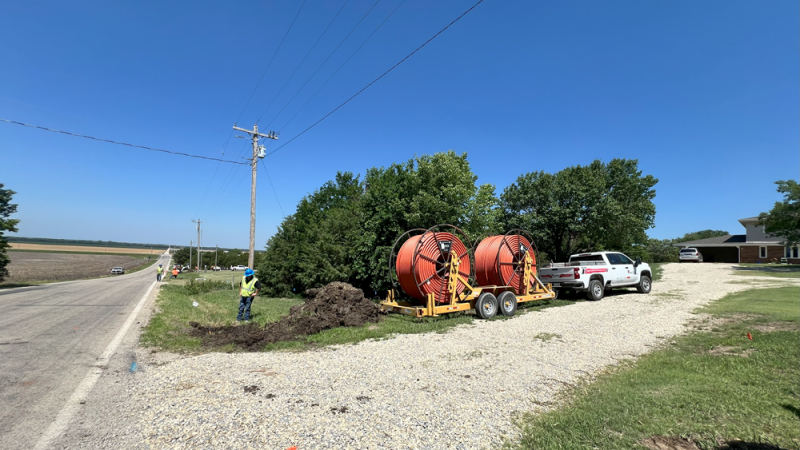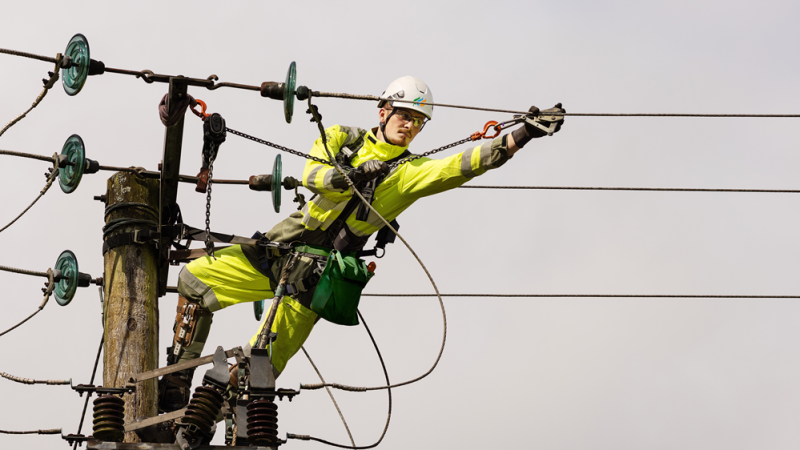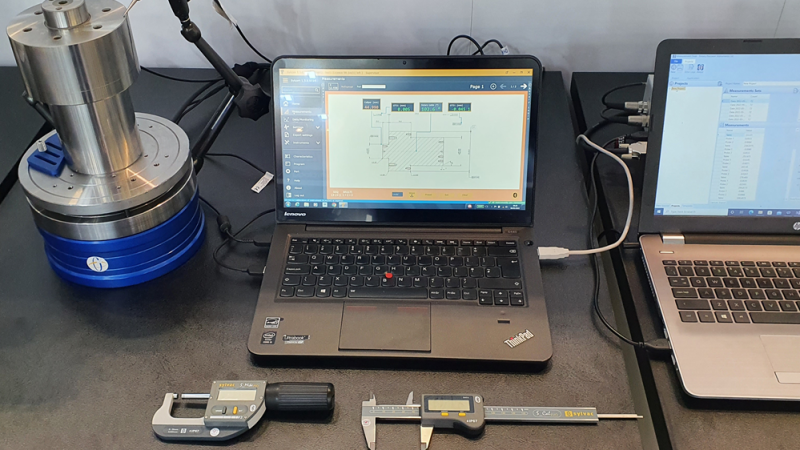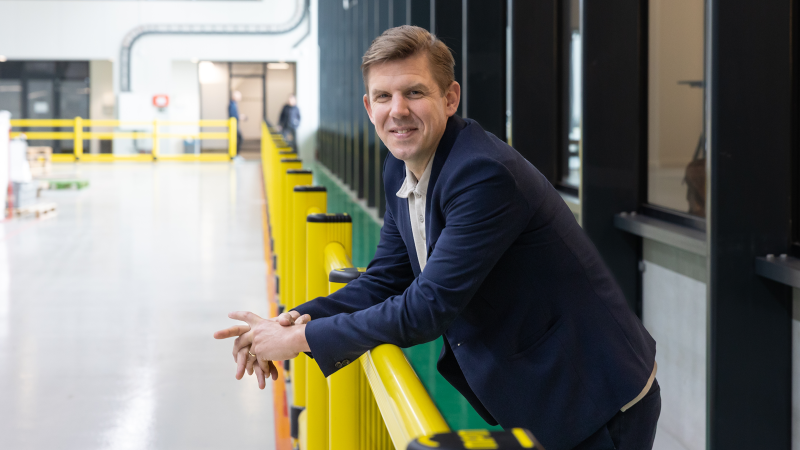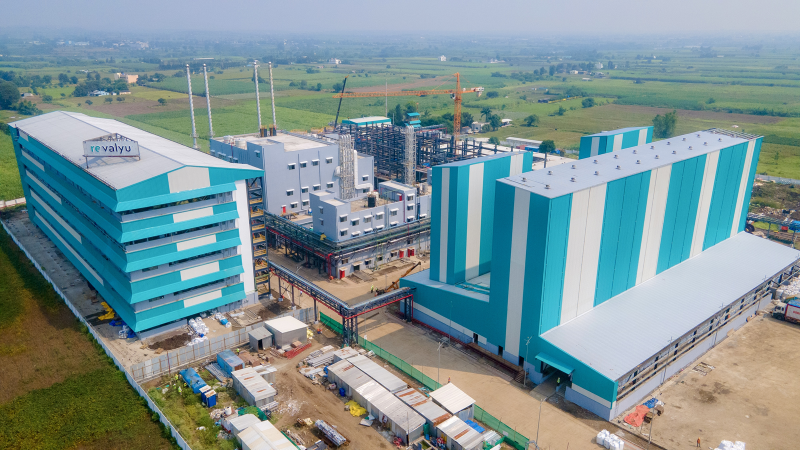Cold Jet’s carbon technology offers environmentally friendly technologies for cleaning and cooling.
Cold Jet is an environmental technology company focused on the application of recycled carbon dioxide, as both a cleaning medium and a transport cooling medium. Its products and services are primarily applied in the manufacturing and industrial sectors, including the automotive, aerospace, food processing, and life sciences sectors.
“In many cases, our reclaimed carbon dioxide systems solidify that gas into solid CO2 or dry ice, and the dry ice becomes a cleaning and surface preparation medium,” explains Eugene Cooke, President and CEO of Cold Jet.
 As a cleaning medium, it is unrivalled.
As a cleaning medium, it is unrivalled.
“In the cleaning and food processing industry, if you have equipment that has been used for producing nut-based products and it needs to be used for non-nut-based products, the equipment needs to be clean to prevent contamination,” Cooke explains. “Our methods reduce bacterial strain on process equipment. Nut allergy remnants are removed in situ, and because CO2 in its solid form is not a conductor and sublimates on impact there is no secondary waste stream.”
The other advantage CO2 has as a cleaning medium is that CO2 is not water. Indeed, it is possible for CO2 to completely eliminate the need for water in the cleaning process, meaning less water contamination, less water waste, and smaller energy needs used in water treatment.
“Before Cold Jet, a company like the food manufacturer, Nabisco, would use water and chemicals to clean their baking ovens and sheets and the conveyor systems through those ovens,” Cooke tells us. “It means a tremendous amount of water needs to go through water treatment facilities.”
Cold Jet eliminates that need. Meanwhile, in the cold chain sector, CO2 has its own unique advantages.
“In transport cooling, the most recent and best example is the mRNA vaccines that were developed and transformed the world in 2020, and 2021,” Cooke points out. “Those vaccines needed transporting from point of manufacture, so in Pfizer’s case, just outside Brussels, to multiple points of use around the world. They needed ultra-low temperature until directly prior to inoculation, and dry ice was determined to be the perfect medium for maintaining the cold chain from point of manufacture to point of use.”
This is not the only way that Cold Jet is an aid to people’s health, however.
“It is also a health and human safety tool, because those cleaning agents should not be breathed, and should not be ingested,” Cooke says. “By eliminating their use occupational safety for the staff at the Nabisco facility is improved.”
A Waste Solution, Not A Cleaning Product
While the efficacy of Cold Jet’s cleaning solutions is not in question, Cooke is the first to point out that it comes at a considerably higher price point than some more traditional cleaning products.
“When fielding a Cold Jet solution such as our dry ice blasting system, the capital cost is materially higher than a pressure washer or steam cleaner or some of the other water-based cleaning tools,” Cooke admits. “So the question is, how do we present our process if all we are offering is an alternative to a steam cleaner? In direct comparison, it seems expensive.”
 This might seem like an odd thing to admit, but as Cooke points out, it isn’t a direct comparison.
This might seem like an odd thing to admit, but as Cooke points out, it isn’t a direct comparison.
“If we position dry ice blasting as a waste minimisation process, that comparison is no longer applicable,” Cooke says. “We have to present our process and technology not as a direct comparison to cleaning tools being used today, but as an opportunity to attain sustainability.”
That might seem like a hard sell, and not long ago it might have been, but we live in rapidly changing times.
“The dynamic has changed over the past 24 to 36 months. So much changed in 2020, but there was a trend towards sustainability that was accelerated that year,” says Cooke. “Not all of our customer discussions are incepted by the customer finding us, but a good number of them are.”
Whether it is food processing or semiconductor manufacturing or automobile production or batteries for electric automobiles- all these sectors have a cleaning and surface preparation aspect to them. Cold Jet is positioning its solution as not just cleaning and surface preparation but as a solution that delivers sustainability.
“That is how we overcome that hurdle of acquisition price versus traditional cleaning or surface preparation,” Cooke says.
A Jet-Set Future
As well as being geared to sustainability, there is another trend that Cold Jet’s cleaning solutions are geared towards.
“Companies are looking to take on active processes and develop automation-based solutions to achieve them consistently and continuously,” argues Cooke. “Our processes, tools and equipment lend themselves to automation.”
But when we speak to Cooke, it is clear there is one project in particular that he is excited about. Cold Jet has a big project on the horizon- and that is appropriate. Because Cold Jet is working with the US cell phone firm, Horizon. And once again, sustainability is at the heart of it.
“This is a very big opportunity. When customers get tired of their handsets and bring them back to their cellular provider – that handset then has a secondary market,” Cooke tells us. “But the first thing that needs doing to that handset is that it needs cleaning. We have a large project with Horizon outside of Dallas for CO2-based cleaning for thousands of handsets.”
Beyond that? Cooke believes that Cold Jet’s future looks a lot like its present, focusing on growing its global customer base.
“We are continuing to expand our presence so that we can provide a similar solution to firms like Procter & Gamble in Stuttgart, Germany or Cincinnati, Ohio,” says Cooke. “We have built and continue to develop multi-country locations and staff so that we can provide the same solution to Procter & Gamble across those locations. But with 13 facilities and just over 320 staff members around the world, we can offer the same level of after-installation support and ongoing service provisions wherever they are. We continue to expand our presence and our capabilities.”

